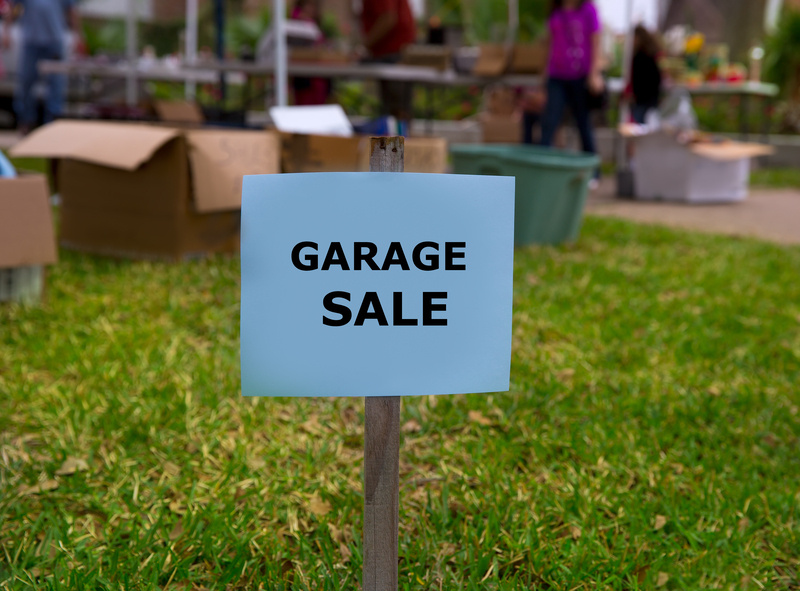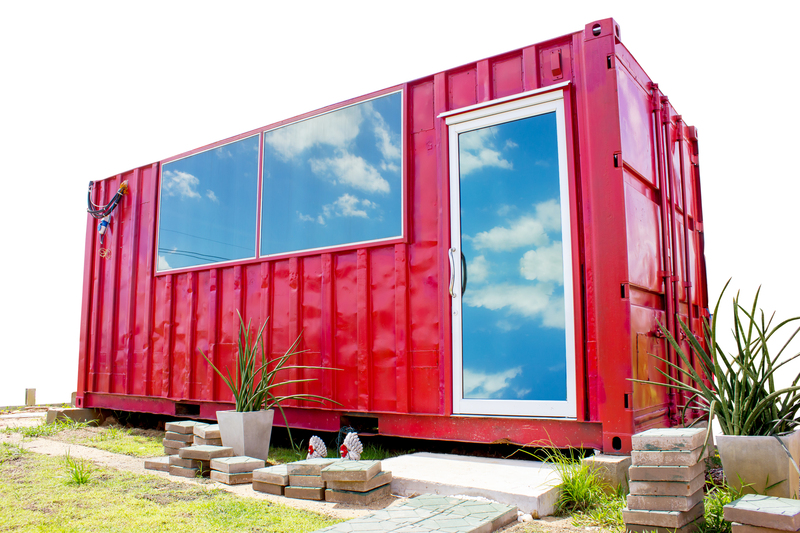How to Determine if Pots and Pans Can Be Recycled or Donated
Upgrading your cookware or simply downsizing your kitchen? No matter your reason, you may find yourself with old pots and pans you no longer need. The challenge lies in disposing of them responsibly. This guide will help you determine if your pots and pans can be recycled or donated, offering eco-friendly and community-focused options for your unwanted cookware.

Why You Shouldn't Just Throw Away Old Pots and Pans
Kitchenware disposal isn't as straightforward as tossing it in the garbage. Pots and pans are typically made from metals like aluminum, stainless steel, or copper, and many include non-stick coatings, plastics, or glass components.
- Landfill Waste: Cookware in landfills can take centuries to break down, contributing to mounting waste issues.
- Environmental Impact: Metals and coatings may leach toxins or harmful chemicals into the environment as they degrade.
- Resource Conservation: Recycling or donating helps minimize the energy and resources needed to produce new pans and pots.
Determining if Your Cookware Can Be Recycled
1. Identify the Material
The first step in recycling used pots and pans is to identify what materials they're made from. Most cookware contains a combination of the following:
- Aluminum: Lightweight, sometimes with non-stick coatings.
- Stainless Steel: Durable, resistant to rust and stains.
- Copper: Excellent heat conductor, often lined with tin or steel.
- Cast Iron: Heavier, with a matte black finish, rusts if not seasoned.
- Non-Stick Coating (e.g., Teflon): Usually black with a slippery surface, often applied on aluminum pans.
2. Check Local Recycling Guidelines
Not every recycling facility accepts pots and pans. Many residential curbside recycling programs only accept basic metals and plastics. However, scrap metal recyclers often take a wider range of household metals.
- Contact Your Local Recycling Center: Ask if they accept metal cookware and if there are any conditions (e.g., removal of non-metal parts).
- Separate Materials: Some centers require you to remove non-metal components like plastic handles or glass lids before recycling.
- Check for Special Collection Events: Municipalities sometimes offer bulk recycling days for metal household goods.
3. Remove Non-Metal Components
If your pans or pots have plastic handles, glass lids, or silicone grips, these will often need to be separated before recycling. Use a screwdriver or pliers to remove handles, and sort materials according to your recycling guidelines.
4. Know What Can't Be Recycled
Some non-stick cookware--especially pans with severely damaged or peeling Teflon coatings--may not be accepted by recycling centers due to the chemicals involved. Glass lids and ceramic-coated cookware are also generally not recyclable with metals. Check with your center if these items can be taken separately.
Can Pots and Pans Be Donated?
1. Evaluate Their Condition
Donating used cookware is a great way to give them a new life and help those in need. Before donating, make sure your pots and pans are in good, usable condition:
- No significant dents or warped surfaces.
- No chipped or peeling non-stick coatings (these could pose health risks).
- Handles should be intact and securely attached.
- Pots and pans should be clean and relatively stain-free.
Tip: If you wouldn't use it yourself due to damage or dangerous defects, it's best not to donate it.
2. Find the Right Donation Center
Not all charity shops or donation centers accept used cookware. Call ahead or check the guidelines for your preferred organizations. Consider these options:
- Local Thrift Stores: Many, like Goodwill or Salvation Army, accept cookware in good condition.
- Homeless Shelters & Transitional Housing: Shelters often appreciate functional kitchen equipment for both direct use and to help people transitioning out of shelters.
- Community Centers and Food Pantries: Some kitchens may accept donations for communal cooking.
- Charity Drives and Garage Sale Funds: Fundraising efforts sometimes accept home goods, including pots and pans, for resale to support their mission.
3. Clean Before Donating
Donation centers prefer items to be as clean as possible. Scrub each pot or pan thoroughly, removing any grease, burnt-on food, or stains. This is courteous and increases the chance your cookware will be accepted and reused.
4. Bundle Cookware Sets
If you have a complete or near-complete set of pots and pans, consider bundling them together. Full sets are often more in demand and easier for organizations to distribute or sell.
Repurposing Old Cookware at Home
If you find that neither recycling nor donating your cookware is an option, don't throw in the towel--or the pan! Here are a few creative ideas for repurposing pots and pans:
- Planters: Drill drainage holes in the bottom and use old pots as quirky outdoor flower holders.
- Storage: Deep pans make handy containers for art supplies, tools, or small toys.
- Garden Tools: Frying pans or saucepans can double as scoops or mixing containers for soil and compost.
- Birdbaths or Feeders: Shallow pans can be hung up or set on stands as unique feeding stations.
- Decorative: Paint them and make wall art or functional home decorations.
Common Questions About Recycling and Donating Pots and Pans
Can You Put Pots and Pans in Curbside Recycling?
Most municipal recycling programs do not accept cookware in curbside bins. Pots and pans can jam machinery or contaminate recycling streams. Always check with local authorities before disposing of any metal cookware this way.
Are Non-Stick Pans Recyclable?
It depends on your recycling provider. Non-stick coatings like Teflon complicate recycling, as the chemicals must be removed first. Some scrap metal yards will accept them if the handle and non-stick surface are removed, but you may need to pay a disposal fee. Always clarify policies first.
How to Dispose of Severely Damaged or Unsafe Cookware?
If your pans have damaged non-stick coatings, severe rust, or sharp edges, do not donate them. Remove as many metal components as possible for recycling and dispose of the remainder with household waste if recycling isn't possible.
Can Induction or Copper Pans Be Recycled?
Yes--copper and induction pans are highly valued at metal recycling centers. They often yield a higher price at scrap yards due to their high metal content. Ensure any plastic or electronic (induction) components are removed first.
How to Prepare Pots and Pans for Recycling or Donation
Steps to Prepare Cookware for Recycling:
- Remove all non-metal parts: Dispose of glass, plastic, or rubber components as per your local regulations.
- Clean thoroughly: Scrub off any stuck-on food or grease.
- Sort metals: Group together aluminum, stainless steel, and copper--scrap yards often pay by type.
- Find a drop-off center: Use online tools to locate your nearest scrap metal or recycling facility.
Steps to Prepare Cookware for Donation:
- Clean and sanitize: Ensure all residue is gone and pans are dry.
- Check for defects: Only donate items with secure handles, no significant warping, and intact surfaces.
- Bundle if possible: Pair lids with pans and group similar items for easier distribution.
- Box up for transport: Place in boxes or bags that keep items from scratching or breaking during the handover.

Other Sustainable Disposal Methods
Contact the Manufacturer
Some manufacturers are developing take-back or recycling programs for old cookware. Before heading to a recycling center, check your brand's website for sustainability initiatives or customer return schemes.
Check for Buy-Back or In-Store Recycling
Certain big-box stores and kitchen retailers, like Williams Sonoma or Bed Bath & Beyond, sometimes offer buy-back or recycling programs for cookware if you purchase a new item.
Community Sharing and Swap Groups
Local online marketplaces (Facebook Marketplace, Nextdoor, Freecycle) are great places to offer pots and pans for free. You might connect with someone furnishing a first apartment or starting over who would appreciate your gently used cookware.
Conclusion: Making the Best Choice for Your Old Pots and Pans
Whether your old pots and pans can be recycled or donated depends largely on their material and condition. By researching your local options, separating different components, and seeking out donation opportunities, you can lighten your environmental load and help others. Remember:
- Check with your local recycling center before dropping off cookware.
- Donate only clean, functional items to charity.
- Try creative repurposing if standard options aren't available.
When upgrading your cookware, be sure to dispose of old pots and pans in an eco-friendly way. With a little effort, you'll keep waste out of landfills, support your community, and possibly give your old kitchen favorites a new purpose.